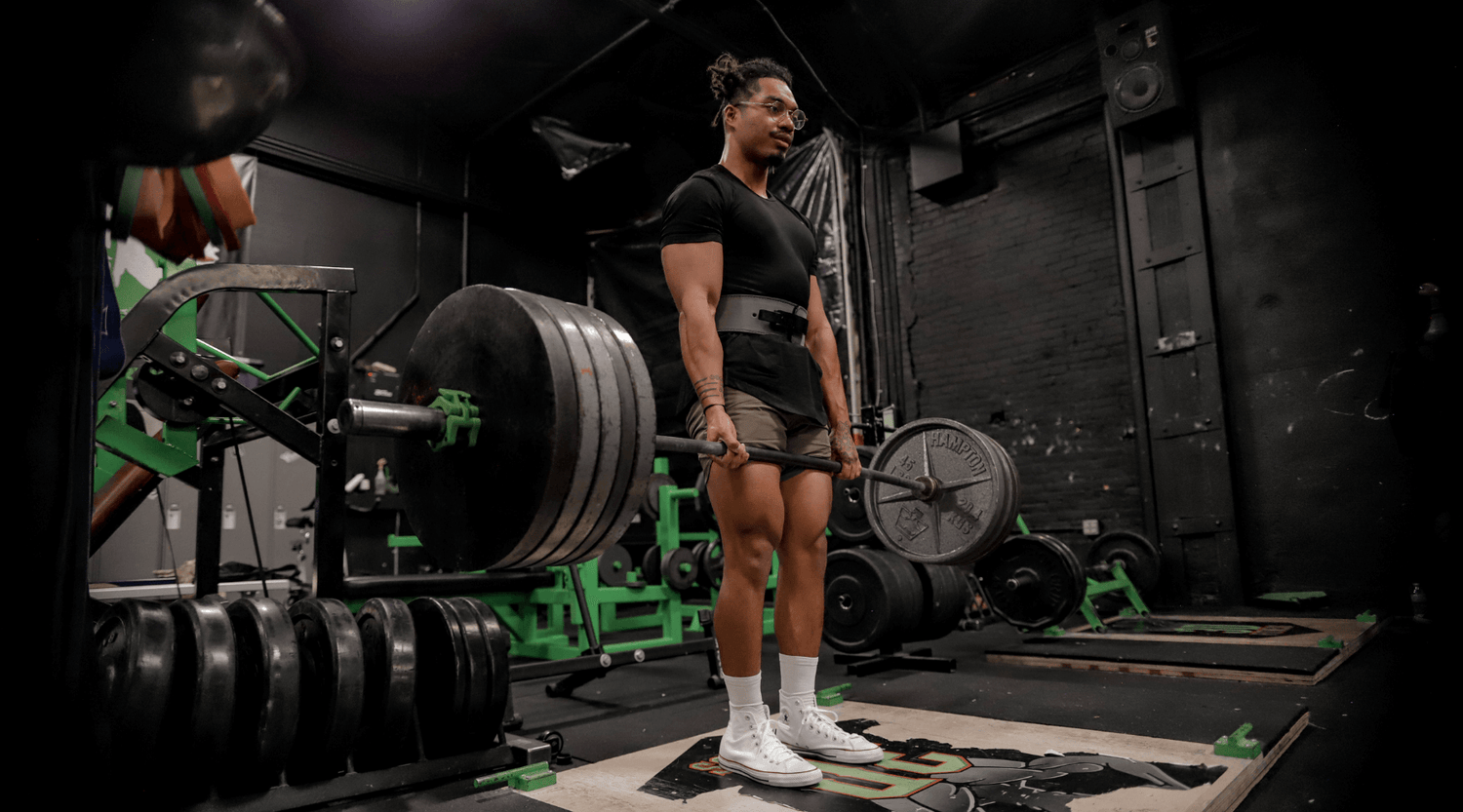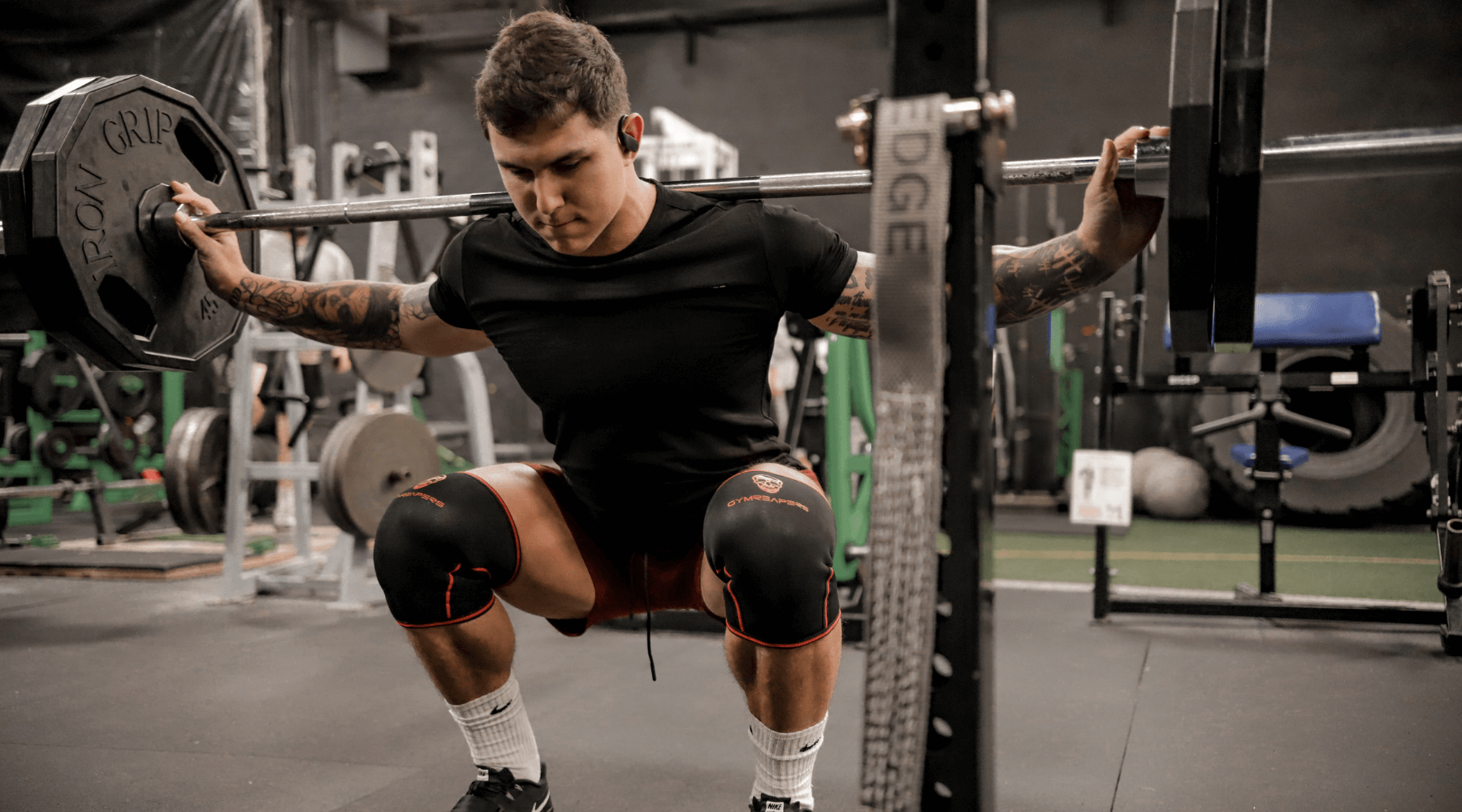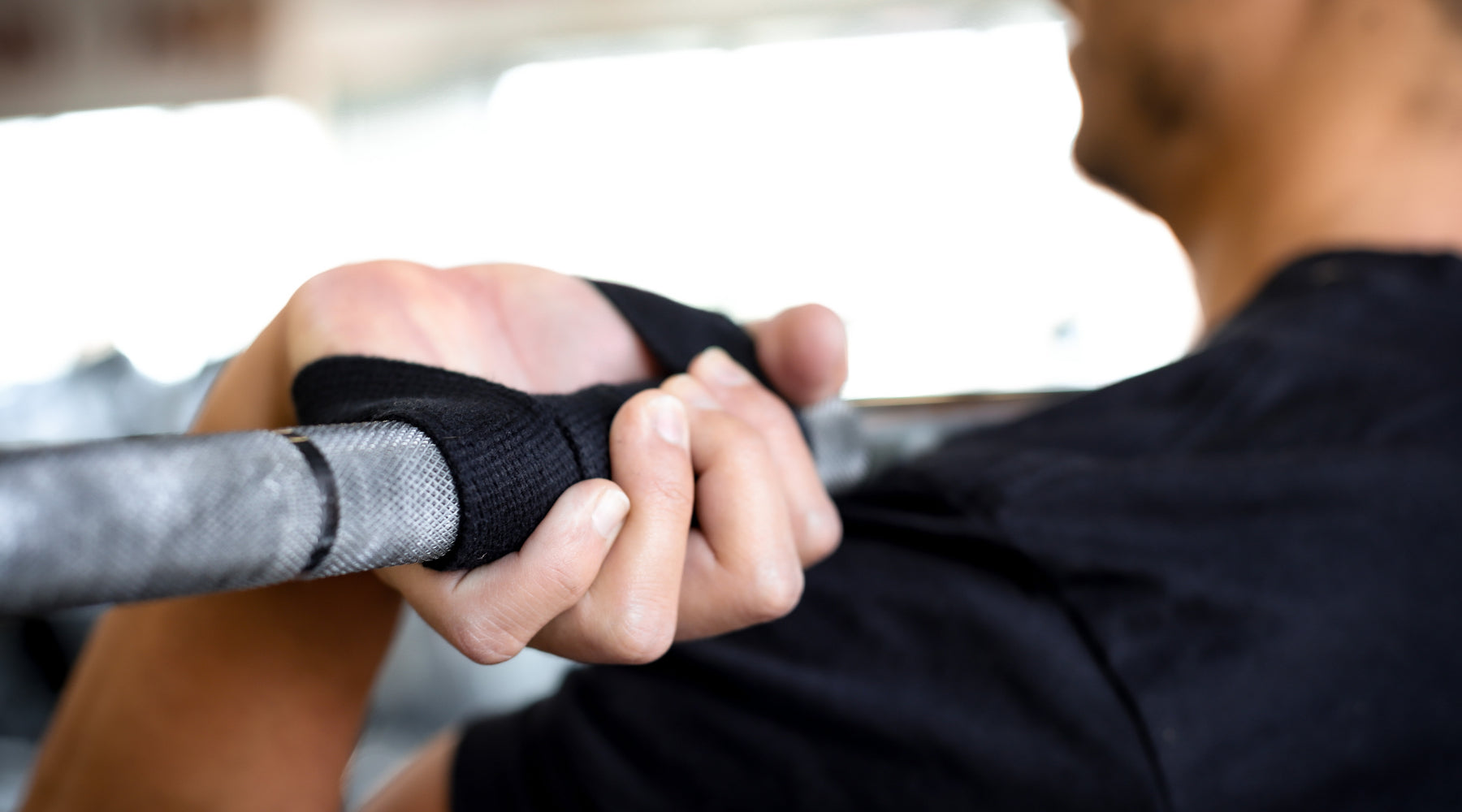People associate powerlifting with progress. It’s a passion for some, an obsession for others. Powerlifting, whether you’re training for a competition, a professional, or trying to get stronger with compound movements, is a true test of strength. Because if we’re being real, you can either lift heavy weights or not.
There are hundreds of resources out there that get into the science and technical training of powerlifting. For the purpose of this article, we’ll focus on the safety and support essentials of powerlifting.
Even if you aren’t training for a powerlifting competition, but are strength training by doing traditional compound movements like the big three (squats, bench presses, and deadlifts), it’s important to know how to do it safely.
Whether you’re looking for support with your back for squats and deadlifts, or wrists and elbows for bench press, there are ways of going about it correctly and safely. We'll dive into the support and stability needs for powerlifting (and even strength training with compound moves). You'll also learn about the following topics in this post:
- What is Powerlifting?
- Using Powerlifting Equipment
- Using a Powerlifting Belt
- Powerlifting Shoes and Socks
- Should I use Wrist Wraps?
- Using Elbow and Knee Sleeves in Powerlifting
- The Competition Singlet

What is Powerlifting?
Well, you might be a powerlifter without realizing it ... Okay, that might be a stretch. However, powerlifting competitions are based on the three major compound movements (squats, bench press, and deadlifts). The point is — if you’ve been working to add muscle mass and strength through compound moves, you’re on a similar track as amateur powerlifters.
The heavy work is done at powerlifting competitions (typically an all-day event). Powerlifting is a sport and looks to crown a winner who can lift as much weight as possible for a single repetition during a squat, bench press, and deadlift. However, each person competing is given three attempts to perform each lift during their allotted division.
Just like most other competitive events, a division determines classifications such as weight, age group, and level of experience. The last item that determines your division is whether you’re wearing supportive gear or not.
There are restrictions on what is allowed and what isn’t, which we will cover a little later. When everything is said and done, and the competition ends, awards are presented to the lifters with the highest ratings in squat, deadlift, and bench press.
Using Powerlifting Equipment
This is a touchy topic for some because some people feel like supportive equipment is all gimmicks and isn’t essential. In reality, there are a select few pieces of equipment that provide the support and functionality to lift heavy stuff, which some people prefer. How do you decide if you should use gear or not?
That can be a personal preference and neither choice is wrong. What we can agree on though is that proper lifting form should always be a top priority. Some people avoid gear initially in order to develop their form and then add supportive gear later.
Some never adopt gear in their training or competition. In the next sections, we’ll cover the gear that is definitely essential, no matter if you’re training in a gym or competing at an event.
1) Powerlifting Belt
Choosing a powerlifting belt can really make an impact when you’re trying to improve your overall strength and performance. For most powerlifters, the preferred choice is a quality lever belt. Lever belts are designed to help provide support and decrease the risk of injury if used correctly. Quality lever belts are made from genuine leather and feature an adjustable lever buckle.
Because the belt features a lever instead of a traditional buckle, lifters can get a tighter grip around the waist, allowing for better support and proper breathing technique.
Ultimately, investing in a quality belt, whether competing or not, is an important decision and is beneficial to long-term progress. If you're looking for quality and durability, the Gymreapers 10mm lever belt has been ranked as one of the best weight lifting belts of 2021.

Shop 10mm Lever Belt
2) Shoes and Socks
A big component of squatting and deadlift is proper weight distribution. Having the right shoes that can deliver stability is a big key. The type of shoe that works best and is most often used is one that provides sturdy traction to the floor or pavement. You’ll often see people wearing shoes from brands Vans or Converse. Although they may look ideal, it’s important to choose wisely.
Yes, shoes for powerlifting should be flat and allow for your toes to have some wiggle room. The problem with most shoes is that they can constrict the toes causing you to have inadequate weight distribution. That’s why it’s important to invest in the right footwear.
Speaking of feet, another powerlifting need is socks. Now we’re not talking about just any kind of socks. If you’re deadlift on a regular basis, you know that this can be a bloody mess. The shins take on a beating from the barbell, but that can be reduced by wearing high-rise socks.
If you’re competing at an event, the last thing you want to be doing is bleeding all over the place. Also, nobody else wants to be stepping in blood. High-rise socks are also a mandate by a lot of federations, so if you compete, check the rules before you go.
3) Wrist Wraps
Unlike lifting straps that help with deadlifts, wrist wraps are allowed to be used in competitive powerlifting (if you’re in the gear division). Some lifters wear them while performing squats, but they’re commonly used during bench presses. Wrist wraps offer great support during heavy lifts because they help stabilize the wrist joints.
You’ll even see bodybuilders and fitness experts wear wrist wraps in the gym during their workouts because of their ability to support heavy lifting. There are different types of wrist wraps for different activities, but for powerlifting and strength training, sturdy wrist wraps with nylon and elastic material are best.
4) Elbow and Knee Sleeves
Sometimes the overlooked pieces of equipment during training and competition are knee and elbow sleeves. They’re certainly not allowed for “raw” powerlifting, but for those needing the extra compressive support, knee and elbow sleeves are a great tool.
Compression knee and elbow sleeves are both made from durable neoprene material which doesn’t lose its quality and effectiveness over time.
No matter how much you twist and bend them, you still get the same effect and support from compression knee and elbow sleeves. Depending on their thickness, both knee and elbow sleeves are also used to help combat pain and stiffness.
The warming properties of compression knee and elbow sleeves help cushion the joints and offer stability during lifts. For those that are looking for intense support, there are also knee wraps.
Knee wraps are made from elastic and nylon materials so they require a little more work to put on. However, knee sleeves are quickly adjustable and provide compression, support, and stability for powerlifters and strength trainers.
Shop 7mm knee sleeves
5) The Singlet
If you aren’t competing, you obviously wouldn’t wear a singlet to the gym or wherever you strength train. However, for competitions, singlets are required in every federation. If you don’t invest in one or somehow forget to wear it to competition, then you’re out of the competition.
Why are they required? Singlets are mandatory in order to establish a fair game and prevent cheating by wearing supportive clothing. When looking for a singlet, choose materials that are durable and have the same snug fit a t-shirt might have.
Deciding to Compete
Now that you know the basics of what’s essential gear for powerlifting (or strength training), you might be thinking of someday competing, right? Well, luckily there are great resources available that cover how to find competitions, which federation to join (and why they think they’re the best), and how to choose your weight class.
A good place to start your search about the world of powerlifting is the USA Powerlifting site, which has plenty of resources for beginners and professionals.
Before you decide to compete professionally, there are moves you can do right now at your current local or home gym. We mentioned that powerlifting involves three main compound movements. If you’re looking for strength and muscle development, performing the big three essential compound movements can help you train for the big show.
Always remember that form should take precedence over the weight quantity and that using supportive gear can help you become stronger and be more powerful.














1 comment
Betfair Sportsbook
Very well written article! Can’t wait to read more of your amazing work.
Leave a comment
All comments are moderated before being published.
This site is protected by hCaptcha and the hCaptcha Privacy Policy and Terms of Service apply.